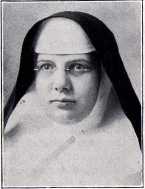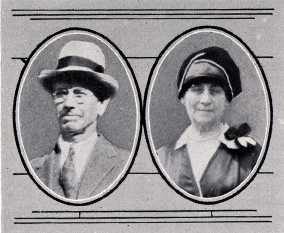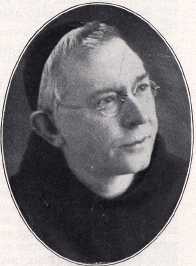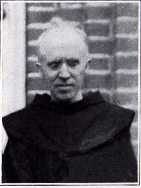NEGenWeb Project
Church/Catholic
Franciscans
Chapter XXIII
Holy Family Church, Lindsay, Platte County
THE HOLY FAMILY PARISH, LINDSAY, PLATTE COUNTY, NEBRASKA, 1894-1931
The Holy Family parish was organized in 1894. Prior to this time the Irish Catholics attended St. John's at Columbus, St. Patrick's and later St. John Nepomucene on Shell Creek, Joliet Township. St. John's and St. Bernard being too far away for a number of parishioners, quite a few missed Mass, especially when the weather and the roads were bad. Realizing the advantage of having the church in town, where the Catholics were increasing in number, already Fr. Salvator Lehman planned to erect a church at Lindsay. The parishioners of St. John's Nepomucene protested against this move and the Ecclesiastical superiors frowned upon the same. Hence it was abandoned temporarily.
ORGANIZING A PARISH AT LINDSAY
A mission was preached for the people of St. John's in December, 1893, by the Rev. Mauritius Baukholt, O. F. M. The attendance of the Lindsay people was rather slim, because of distance and bad roads; hence the missionary advised the pastor, Fr. Herbert Stotter, to start a church at Lindsay. After obtaining the necessary permission, he was given the use of two rooms at Mr. John Freschauf's and on December 9, 1894, the first mass was celebrated there. Eight times the Freschauf home was used for divine service with an increasing attendance so that the rooms available proved insufficient. In February, 1895, "The New England Hotel" just erected by Mr. Rausch was leased for ten months by the Catholics and the office and parlor used for a temporary church. From this day on the Holy Family parish had services on two Sundays of the month.
ERECTION OF A CHURCH
When the first church was to be erected at Lindsay, the Provincial Michael Richardt at first gave consent on condition that church and school be erected at the same time. But the drought of 1894 and almost total crop failure made this impossible; and so the promise to build as soon as feasible obtained the permission to proceed with the church. The Fremont, Elkhorn and Missouri Valley Railroad donated a lot sixty by hundred-forty feet for church purposes. The parish bought two additional lots of the same size and made a down payment of $50. The deed was given to the Rt. Rev. Bishop Scannell. Meanwhile Bro. Ad-
*Michael Gaspers, Peter Backes, Mrs. Rivet, Mrs.*
rian, O. F. M., had designed the new church On Sept. 3, 1895, the work of excavating began. On Sept. 9th the first brick were laid by Messrs. J. Freschauf and Bernard Hauck free of charge. Mr. P. Riede now commenced and superintended the carpenter work. Mr. Freschauf did the plastering gratis.
DEDICATION OF HOLY FAMILY CHURCH
The dedication of the new church occurred on Thanksgiving day, Nov. 28, 1895. The very Rev. Dean of Columbus, Fr. Marcelline Kollmeyer, O. F. M., officiated at dedication and was assisted by Fr. Anastase Czech and Fr. Rembert Stanowski. Rev. Fr. Florence Kurzer, superior at St. Bernard, sang the High Mass. The English sermon was delivered by Fr. Jerome Hellhake and the German sermon by Fr. Anastase. In the afternoon the bell was blessed by Fr. Jerome. The following acted as sponsors: Messrs. Wm. Connelly, Sr., Bernard Hauck, Daniel Holloran, * * Peter Schad, Mrs. John Gogan, Mrs. Thomas Howard and Mrs. Fred Smith.
* * printed at top of column -- possibly should appear where marked.
BENEFACTORS OF THE CHURCH
The church needed many things to be properly equiped. (sic) An ostensorium was donated by Mrs. Martin Polsin and on Feb. 9, 1896, Sacramental Benediction was given for the first time in the history of the parish. The Stations of the Cross, a donation from Mrs. Fred Smith, were blessed on the same day. On Easter Sunday, March 5, 1896, the new altar was used for the first time. A month later the Thirteen Hour Devotion was held. Fr. Ladislaus Czech of Omaha and Fr. Severin Westhoff, pastor of St. Mary's, lent their aid. About eighty persons received the sacraments.
REV. PHILEMON TOEPFER, O. F. M.,
1896-1897
In the summer of 1896 Fr. Heribert was replaced by Fr. Philemon Toepfer, a young priest, who after a year left for California. Here he labored in Lake county, San Francisco and Los Angeles, where he passed away some time ago, He was succeeded by
FR. WALFRIED ROMPE, 1897-1899, AND
REV. SABINUS MOLLITOR, O. F. M., 1899-1901
Meanwhile the congregation had constantly gained in membership and the crowded condition of the little church, especially in sum-
508
![]()
|
Second Holy Family Church--First Church |

Ven. Sr. Fidelis Smith, |
||

Mr. and Mrs. John Freschauf |

Rev. Germain Heinrichs, O. F. M. |
||

Rev. Ludger Wegemer, O. F. M. |
The J. Freschauf Home, |
||
509
![]()
mer, induced the pastor and his people to build a larger church and remodel the old one into a school. The Provincial Chapter remitted all the arrears due for past salary up to 1897 inclusively and fixed a salary at $200 per year with services twice a month. Both the pastor and the superior at St. Bernard were urged to labor zealously in behalf of Lindsay by endeavoring to organize a parochial school.
THE SECOND CHURCH,
1899-1901
Complying with instructions received, Fr. Sabinus made preparations to erect a new and larger church. On March 19, 1899, the men of the parish elected Messrs. Peter Backes, Fred Smith, and Frank Connelly as a church committee. The meeting also favored the building of a new church, large enough for the next fifteen to twenty years, and the remodeling of the old church into a school. The meeting likewise approved the alternate preaching. on Sundays of German in the early Mass and of English in the High Mass. This was done to satisfy the two principal nationalities in the parish.
ERECTION OF THE NEW
CHURCH,
JUNE 19, 1899
On June 19, 1899, the ground was broken for the new church. The plans called for a frame building (38x90 feet) with basement and steeple. The approximate cost was twelve thousand dollars. Owing to unfavorable weather and scarcity of help it was Aug. 15, before the corner stone could be laid by Fr. Herbert, the former pastor, assisted by Fr. Ladislaus and Fr. Thomas Wilgenbusch. The English sermon was preached by Fr. Sylvester Buschkuehler, of Quincy, Illinois, and the German sermon by Fr. Ladislaus. Mr. J. Freschauf, mason and contractor, completed the laying of the corner stone. Mr. Ferdinand Remm, of West Point, with two men began the carpenter work about October. Having raised the roof trusses and secured the building, he went home for the Holidays. On March 18, the trustees resolved to borrow $1,000 to pay the lumber bill due at the end of the month. After a delay of three months the carpenters resumed their work. On August 4, 1900, Holy Mass was offered for the first time in the new building.
HOLY FAMILY CHURCH
The interior of the church remained still to be decorated and adorned. The sanctuary group of the Holy Family from the Da Prato Company, Chicago, Illinois, arrived on January 30th. Mr. Vanchura started work on an addition to the old church or the school, to serve as a Sisters' residence after the furniture and fixtures had been removed to the new church.
COMPLETION AND DEDICATION
Mr. Theodore Fleskes, of Mount Carmel, Iowa, accepted the contract for finishing the church. He began work on the arches and soon had the edifice ready for lathing and plastering, which was done by Mr. J. Freschauf. Another loan of $1,000 was made, to tide over financial difficulties. On May 2, 1901, the structure was completed.
The new church was dedicated by Right Rev. Scannell, D. D., Bishop of Omaha, on March 24, 1901. Fr. W. J. Jungles and Ladislaus Czech delivered the German and English sermon respectively.
A HOLY MISSION
A holy mission, February 10-17th, 1901, was preached by the Rev. Daniel Finkenhoefer, O. F. M., and was well attended.
THE HOLY FAMILY CEMETERY
As any town for the living must needs provide a resting place for the dead, land was acquired southeast of the town, Mr. George Hauck and Mrs. Mogan each donating an acre. The first to be laid to rest here was Mrs Teresa Warth, on June 9, 1901.
Fr. Sabinus was called by obedience to St. Louis, Missouri. He labored for a number of years in various places and finally passed away suddenly at St. Louis, after a brief illness, on July 8, 1924. John Mollitor (such was Fr. Sabinus' name) was a native of Chicago, Illinois, where he was born Dec. 29, 1865; he made his classical studies at Quincy College, received the habit, Aug. 2, 1886, took his solemn vows Aug. 3, 1890, and was ordained on June 5, 1892. After laboring in various states he passed away at St. Louis, Missouri, July 8, 1924.
OPENING OF THE PAROCHIAL SCHOOL
The parochial school, one of the most vital factors in the solid upbuilding of a parish and a main cause for its flourishing condition, was opened in September, 1900, with the Franciscan Sisters of Charity, of Manitowoc, Wisconsin, in charge. Due to a lack of Sisters, a number of other communities had turned down the application for teachers. Classes opened with Sr. M. Johanna, superior, Sr. M. Theodora, Sr. M. Michael, housekeeper. The enrollment was 51 pupils.
REV. LULLUS SEEBOTH, O. F. M.,
JULY, 1901-MAY 5, 1904
Father Lullus had the church tastefully decorated by Mr. Hepfinger, of Chicago, at an out-
510
![]()
|
|||